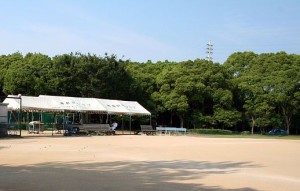Green Belts for a Better, Safer Environment
 Trees, shrubs and other vegetation can absorb certain air pollutants if they are within tolerable limits. This concept is utilised in developing strips of vegetation known as green belt development. Green belts should be developed especially around sources of pollution to improve the environment. In Delhi, the ridge serves as the breathing apparatus of the city.
Trees, shrubs and other vegetation can absorb certain air pollutants if they are within tolerable limits. This concept is utilised in developing strips of vegetation known as green belt development. Green belts should be developed especially around sources of pollution to improve the environment. In Delhi, the ridge serves as the breathing apparatus of the city.
The design and nature of green belts will vary according to the place and the type of industry. Some of the factors which influence the design of green belts are-
- Climatic factors such as wind velocity, temperature, rainfall, sunlight, humidity etc.
- Assimilation capacity of the ecosystem.
- Height and canopy of trees.
- Topography.
- Size of land available.
- Distance from source.
- Soil and Water quality.
- Nature and extend of pollutants.
Advantages of green belts-
- Noise control- A green belt reduces the intensity of sound. Function as a barrier. Trees can either deflect, refract or may absorb sound to reduce its intensity. The intensity reduction depends on the distance sound has to travel from source. Trees can also modify suitably the humidity and climate which affects sound intensity.
- Help in soil erosion control. Plant species help in improving soil quality and bind soil particles thereby preventing erosion.
- Green belts also help in containing water run offs.
- Climate Control
- Air Pollution control- Trees help in removing carbon dioxide and other pollutants from air and by release of oxygen into the air thereby improving air quality. A green belt development can also help in removing particulate matter from the air by trapping such particulate matter.
- Water Pollution control- Some species can remove some pollutants from water. Example- copper absorbed by Chlorella vulgaris and Scandium buy Astragalas, zinc by Typha latifolia, chromium by Salvinia nudans.
Read more on regulatory provisions for Green Belt Development in India
One Comment



